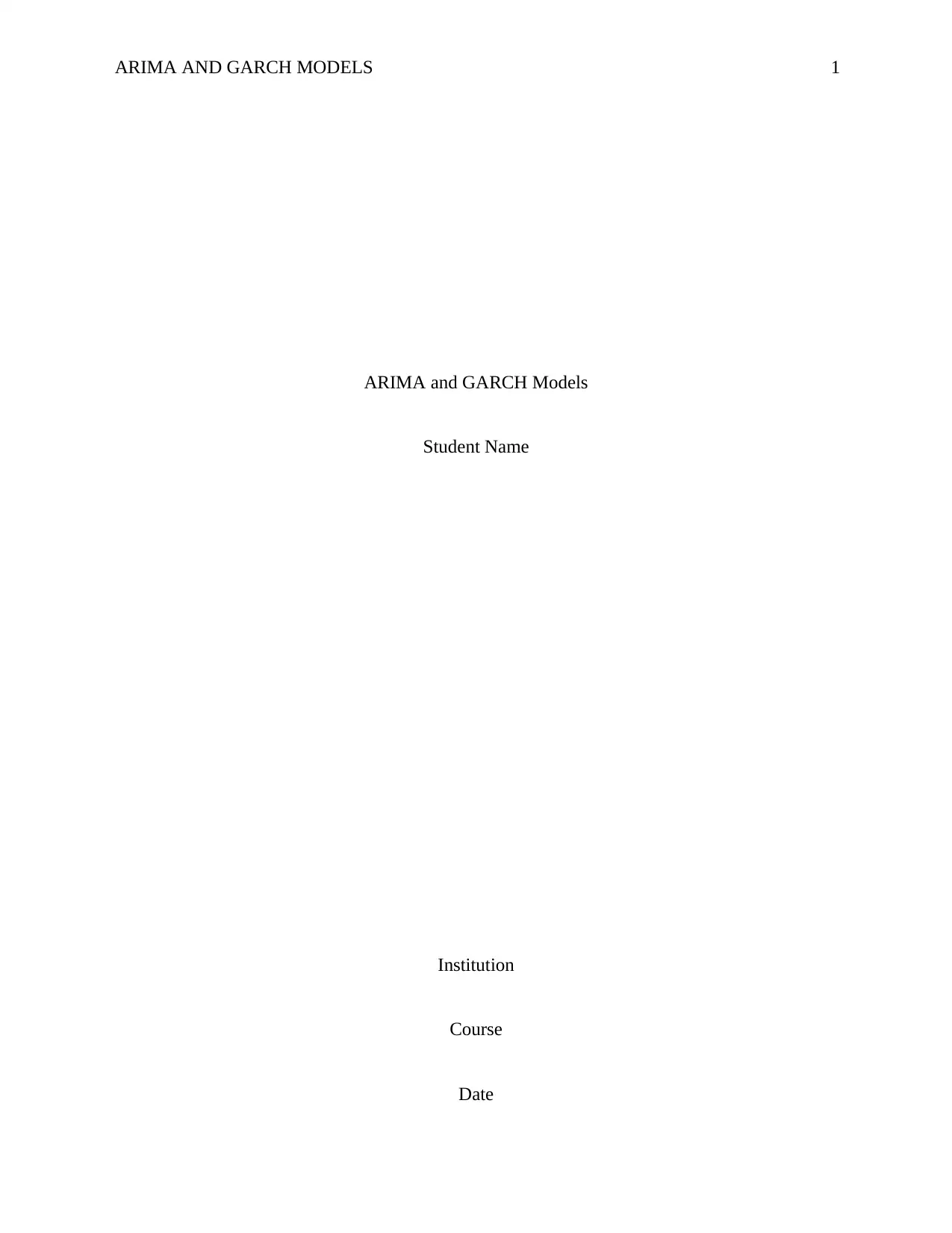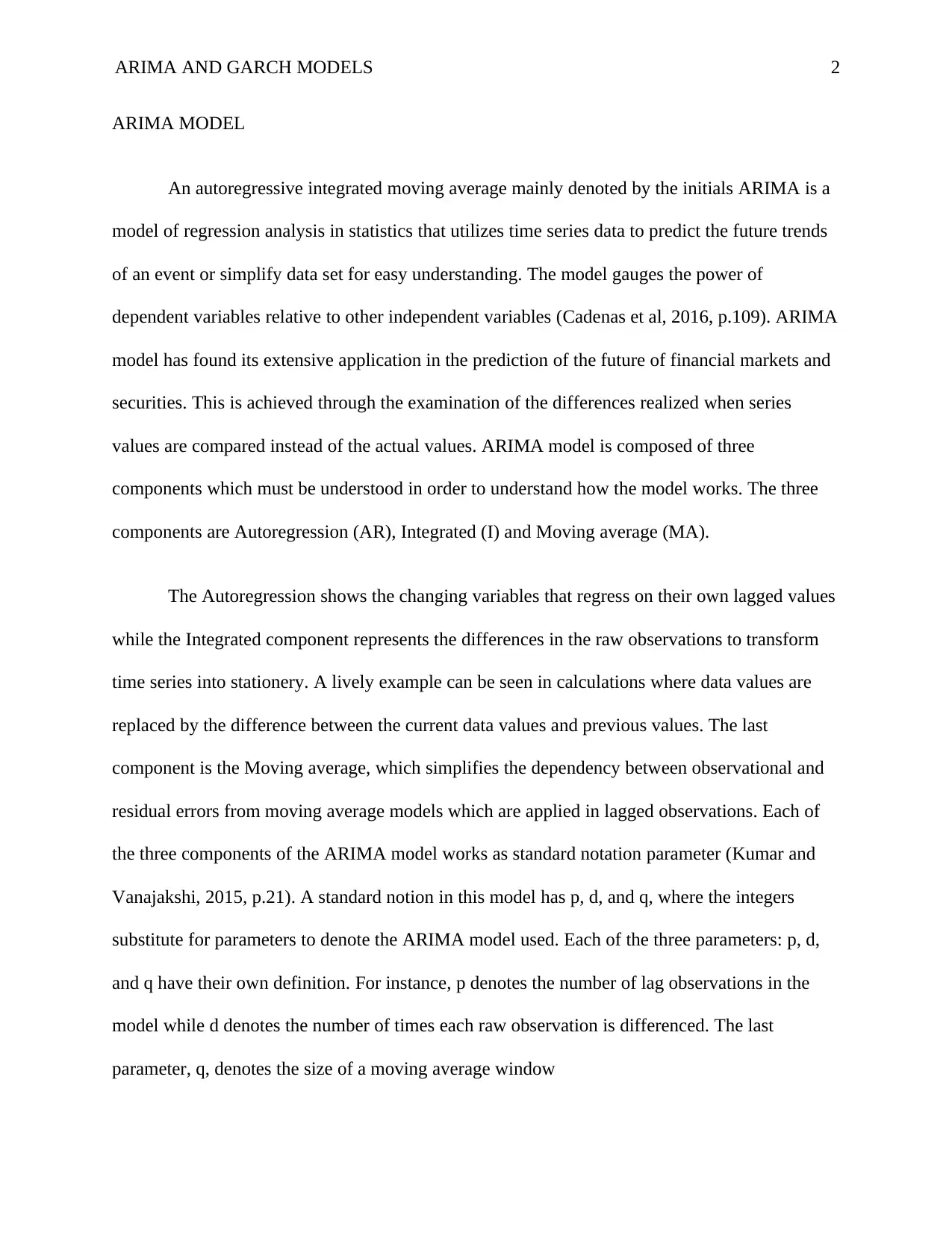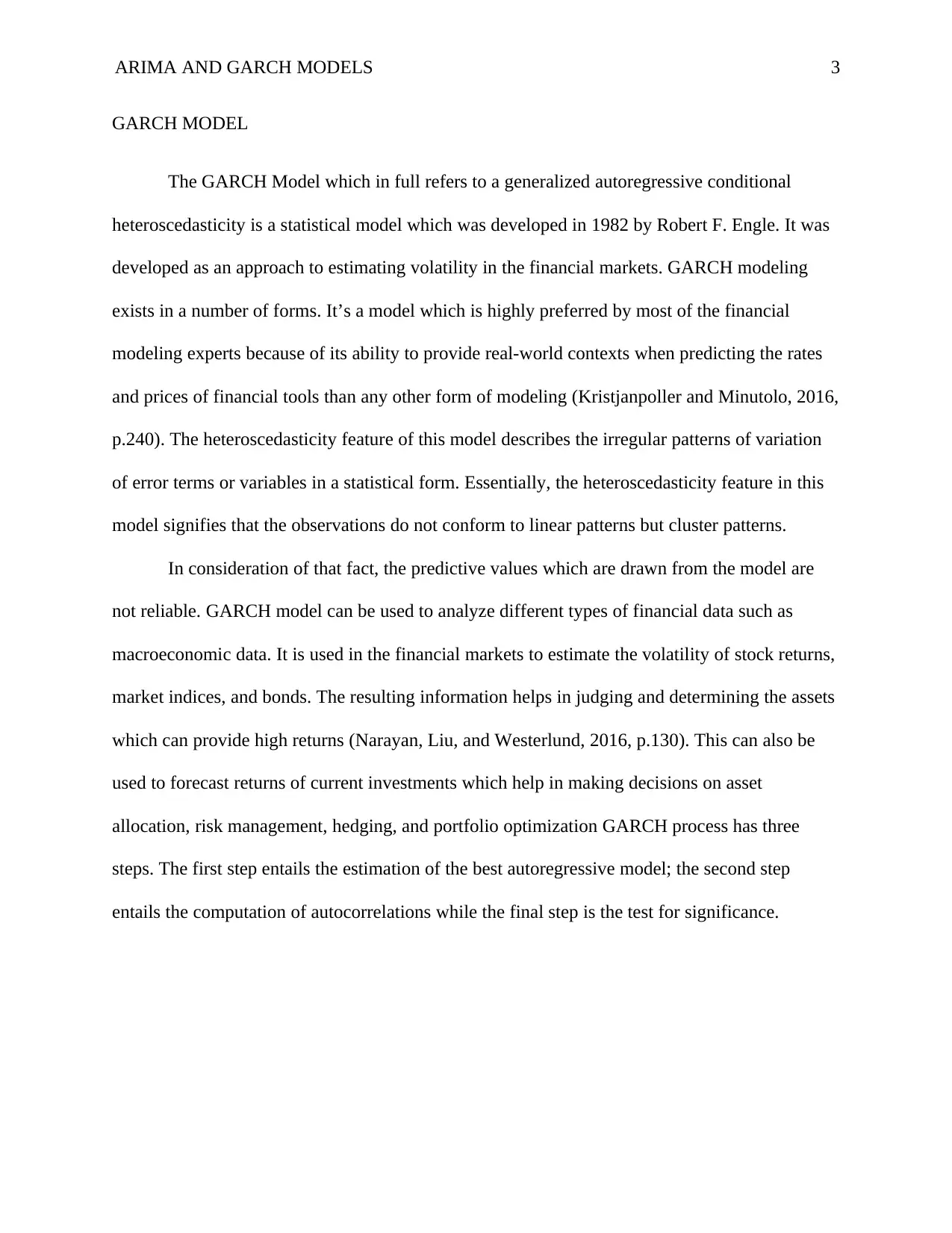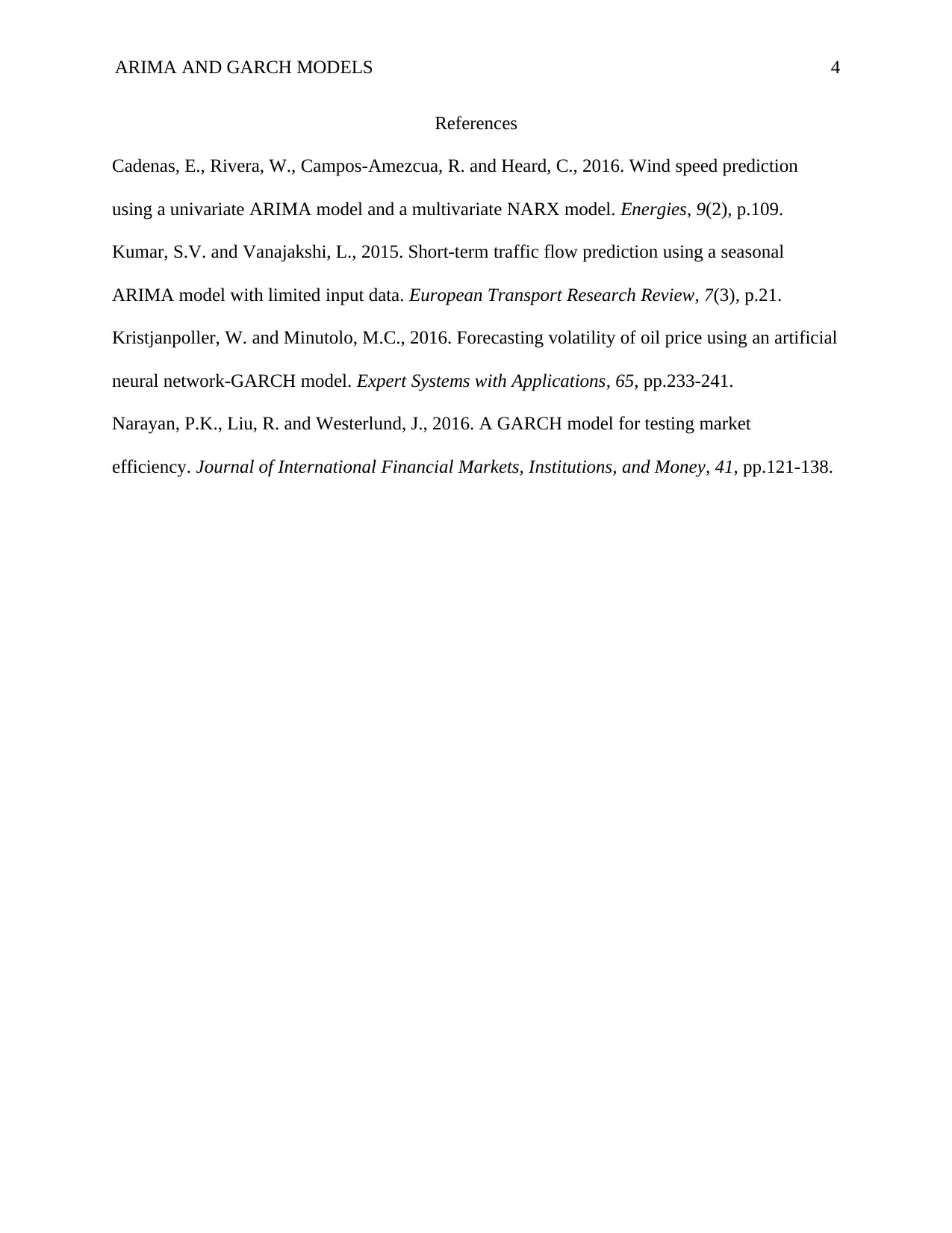Application of ARIMA and GARCH Models in Financial Analysis
VerifiedAdded on 2023/01/20
|4
|792
|53
Report
AI Summary
This report provides an overview of ARIMA (Autoregressive Integrated Moving Average) and GARCH (Generalized Autoregressive Conditional Heteroscedasticity) models, key statistical tools used in financial analysis and time series forecasting. The ARIMA model is introduced as a regression analysis technique that uses time series data to predict future trends, with its components of Autoregression, Integration, and Moving Average explained. The report highlights the application of the ARIMA model in financial markets and securities. The GARCH model, developed for estimating volatility in financial markets, is also discussed, emphasizing its preference among financial modeling experts for providing real-world contexts when predicting financial instrument rates and prices. The report covers the heteroscedasticity feature of GARCH, its use in analyzing financial data like macroeconomic data, and its application in estimating the volatility of stock returns, market indices, and bonds. Finally, the report outlines the three steps involved in the GARCH process: estimating the best autoregressive model, computing autocorrelations, and testing for significance. References to related research are included.
1 out of 4











![[object Object]](/_next/static/media/star-bottom.7253800d.svg)